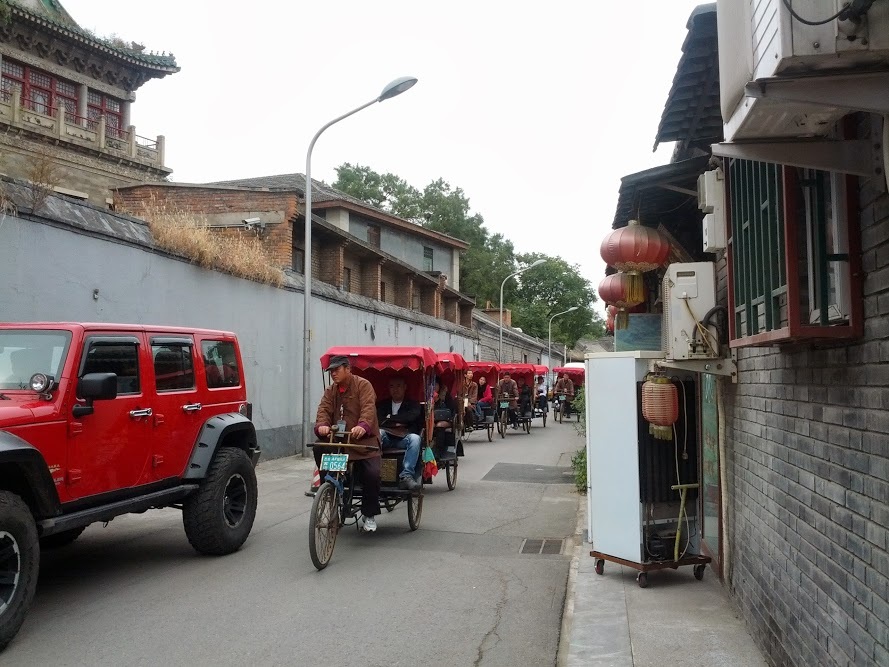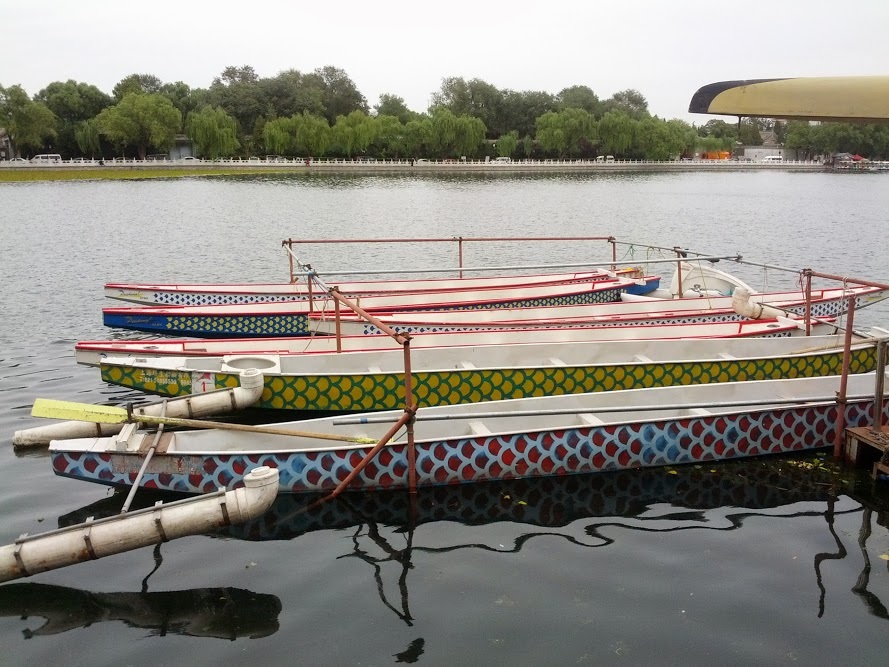Summer Palace
The Summer Palace is located northwest of the city center, about a 45-minute drive from our hotel (without traffic). It was originally built during the Jin dynasty in the 1100's and was subsequently used by the Yuan, Ming and Qing dynasties. It served as a summer resort for royalty.
Our driver dropped us off and we spent about three hours wandering around the palace grounds, which included walking the entire circumference of Kunming Lake.
Our visit wasn't ideal because the weather was really hazy and grey and the palace was jammed packed with visitors. It was more crowded than usual because it was the weekend and everyone was coming to see the giant Rubber Duck by Dutch artist Florentijn Hofman, which was temporarily in Beijing. According to Hofman, the giant duck is on a world tour in an effort to evoke peoples' fondest childhood memories, which will hopefully inspire peace and liberty instead of war. A rubber ducky might conjure up nostalgia for Westerners, but it doesn't for most Chinese since they never owned the floating yellow bird as children. Despite this fact, the duck has given a nice boost to the local economy - generating millions of dollars in park admission fees and in restaurant, merchandise, transport and accommodation sales. The rubber duck might not evoke nostalgia from Chinese adults right now, but I have hunch it will for future generations!
From our perspective, the rubber duck was a nuisance. We came to see the Summer Palace for its history, architecture and natural beauty. The rubber duck was a massive distraction - like a huge zit on a beautiful face. It also drew hordes of people to the park, which we could only escape once we walked to the other side of the lake.
I really liked Zhang Shaohua's perspective as reported on China.org:
If they wish to have it represent liberty, the Rubber Duck should be set free onto the open sea rather than being chained down to float in a lake.
That night we went to an Acrobat show at Chaoyang Theater. Acrobatics is very popular in China, so we decided to see what all the fuss was about. To get to Chaoyang, we took the subway to the Hujialou stop and walked across the street to the theater. The tickets were inexpensive - about 12 USD. You could spend about eight times as much for VIP seats, but the theater is tiny and there really isn't much of a difference between the VIP and regular sections.
I had mentioned in previous posts that I was getting a lot of attention from the Chinese tourists while in Beijing. Well, I fell out of the limelight at the acrobatics show. A family with two read-headed boys showed up at the theater and the Chinese tour groups went NUTS. It was like they had won the lottery! They crowded around the boys and took pictures of them and with them. The boys handled all the attention really well and although they were a little shy, they posed for pictures with all the strangers.
The next day we gave our driver the day off so that we could do some exploring on our own. We took the subway over to the Beihai North stop, then walked northward toward Beijing's inner-city lakes. Surrounding the lakes are really interesting old hutongs, or traditional neighborhood streets, which look much like they did in the old days (though they are now paved and feature plenty of parked cars).
As we completed our circuit around the lakes, we emerged near the Drum Tower. This ancient tower's top floor contains an array of massive drums and antique time-keeping devices. In the old days, the tower staff was Beijing's official time-keeping authority. The clever devices were used to keep track of passing time, and the drums were used to announce the time to the rest of the city. Climbing the steps inside the tower also rewards visitors with a beautiful view of north Beijing.
There's no doubting the fact that Beijingers love their meat. I was really hoping to take a night off from the heavy protein, however, so we found one of Beijing's few vegetarian joints. If you're in Asia and are looking to eat vegetarian, here's a little hint - find the nearest Confucianist or Buddhist Temple. Odds are there will be a restaurant nearby catering to the local monks who do not eat meat. We found Xu Xiang Zhai across the street from a Confucianist Temple not too far from our hotel. We enjoyed a huge and really interesting buffet with all sorts of creative vegetarian dishes - it was wonderful!

















 RSS Feed
RSS Feed
